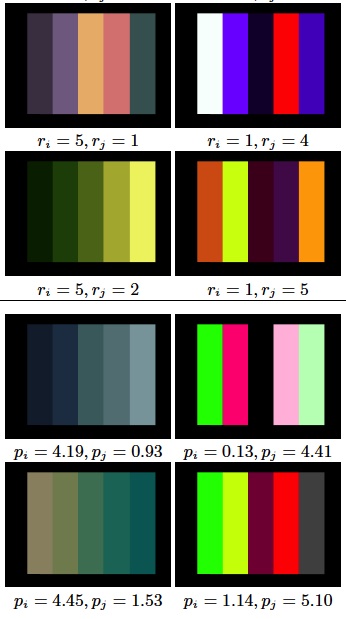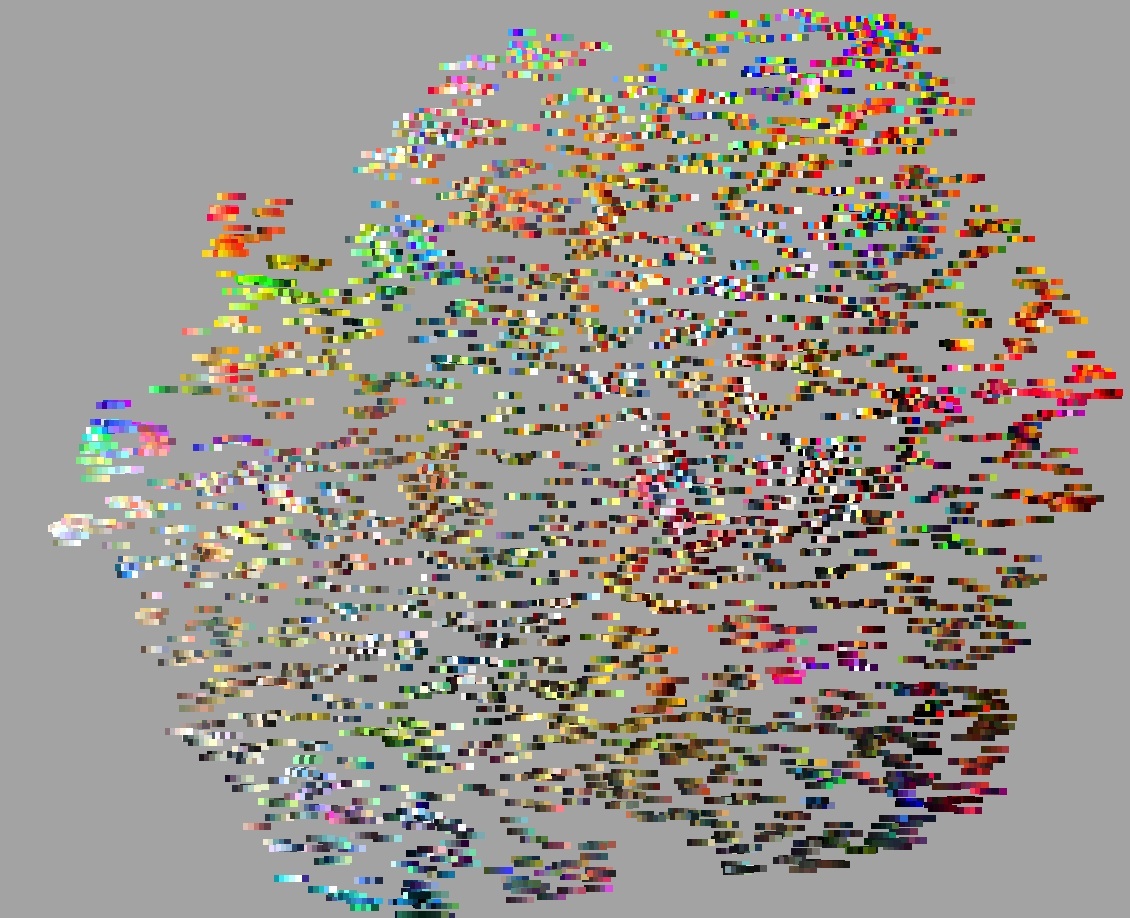Collaborative Filtering of Color Aesthetics
| Peter O'Donovan1 Aseem Agarwala2 Aaron Hertzmann1,2 |
| 1University of Toronto 2Adobe Systems, Inc. |
Paper
Peter O'Donovan, Aseem Agarwala, Aaron Hertzmann. Collaborative Filtering of Color Aesthetics. International Symposium on Computational Aesthetics in Graphics, Visualization, and Imaging (CAe), 2014. BibTexAbstract
This paper investigates individual variation in aesthetic preferences, and learns models for predicting the preferences of individual users. Preferences for color aesthetics are learned using a collaborative filtering approach on a large dataset of rated color themes/palettes. To make predictions, matrix factorization is used to estimate latent vectors for users and color themes.We also propose two extensions to the probabilistic matrix factorization framework. We first describe a feature-based model using learned transformations from feature vectors to a latent space, then extend this model to nonlinear transformations using a neural network. These extensions allow our model to predict preferences for color themes not present in the training set. We find that our approach for modelling user preferences outperforms an average aesthetic model which ignores personal variation.We also use the model for measuring theme similarity and visualizing the space of color themes.
Code and Data:
cfcolor.zip
The code and data are fairly simple, but poorly documented. If you have any questions, please feel free to email me.
This code is adapated from the original PMF code by Ruslan Salakhutdinov
Permission is granted for anyone to copy, use, modify, or distribute this program and accompanying programs and documents for any purpose, provided this copyright notice is retained and prominently displayed, along with a note saying that the original programs are available from our web page. The programs and documents are distributed without any warranty, express or implied. As the programs were written for research purposes only, they have not been tested to the degree that would be advisable in any important application. All use of these programs is entirely at the user's own risk.

